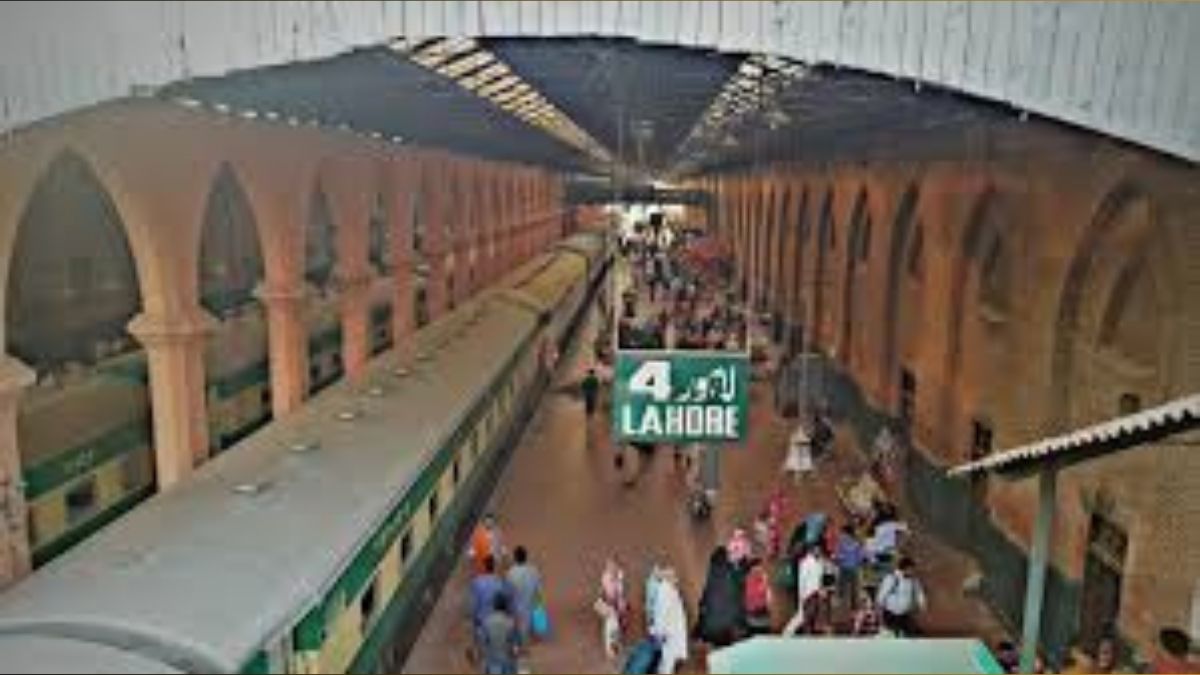Lahore Railway Station, located in Lahore, Punjab, is one of the oldest and most significant railway stations in Pakistan. It serves as a crucial hub in Pakistan’s rail network, linking major cities and facilitating trade, travel, and cultural exchange.
Its history reflects the colonial heritage of the Indian subcontinent’s railway system and the evolution of Pakistan’s transportation infrastructure.
Origins and Construction
- Foundation Era:
The Lahore Railway Station was originally constructed during the British colonial period, with its foundation laid in the late 19th century. The station was completed and officially opened in 1860, making it one of the earliest railway stations in the region. - British Colonial Influence:
The British Empire developed rail infrastructure across the Indian subcontinent primarily to improve administrative control, military mobility, and economic exploitation. Lahore, being a major city in Punjab, was strategically chosen for a key railway hub. - Railway Line Development:
Initially, the station served as a node on the Lahore–Amritsar line, connecting Punjab to other parts of British India. It eventually became a junction for multiple lines extending to Multan, Karachi, and beyond.
Read More: KP Government to Furnish All Public Schools
Architectural Features
- Design Style:
The Lahore Railway Station is a striking example of Victorian-era architecture combined with Mughal and Indo-Saracenic styles. The building features ornate arches, large vaulted roofs, high ceilings, and intricate brickwork. - Structure:
The station includes multiple platforms, ticket counters, waiting rooms, and administrative offices. It was built to accommodate large crowds and heavy freight traffic. - Renovations and Expansions:
Over time, the station has undergone several renovations to upgrade its facilities and expand its capacity. These updates have included modernization of signaling systems, platform extensions, and passenger amenities, while preserving its historical façade.
Historical Significance
- Railway in Colonial and Post-Colonial Times:
During British rule, Lahore Station was vital for troop movements, trade routes, and administrative connectivity. After the independence of Pakistan in 1947, the station became part of the newly formed Pakistan Railways. - Partition of 1947:
Lahore Railway Station played a pivotal role during the Partition, witnessing massive migrations as millions crossed between India and Pakistan by train. It became a symbol of both tragedy and hope during that time. - Economic Impact:
The station has been essential for the movement of goods such as agricultural produce, textiles, and manufactured items, contributing to the economic growth of Lahore and surrounding regions. - Cultural and Social Role:
The station is not only a transportation hub but also a meeting place for diverse populations. It reflects Lahore’s status as a cultural and commercial center.
Read More: K-P Government Pledges Furniture for All Students
Role in Pakistan’s Rail Network Today
- Major Junction:
Lahore Railway Station remains one of Pakistan’s busiest and most important stations. It connects northern and southern Pakistan, serving routes like Lahore-Karachi, Lahore-Peshawar, and Lahore-Quetta. - Facilities and Services:
The station offers passenger services including ticket booking, waiting areas, food stalls, and restrooms. It handles both passenger and freight trains efficiently. - Modernization Efforts:
Pakistan Railways has invested in upgrading Lahore Station’s infrastructure, including platform improvements, digital ticketing, and security enhancements. - Gateway to International Links:
The station is also a critical point for international rail travel between Pakistan and India, notably the Samjhauta Express route, which runs between Lahore and Attari (India).
Interesting Facts
- Lahore Railway Station covers a large area and has more than 7 platforms.
- It is often considered the “Gateway to Pakistan” due to its location and historical importance.
- The station has been featured in several Pakistani films and literature as a symbol of Lahore’s heritage.
Conclusion
Lahore Railway Station is not just a transit point but a living monument that chronicles the historical, economic, and cultural journey of Pakistan. From its colonial inception to its contemporary status, it remains a vital artery in Pakistan’s railway network, facilitating millions of journeys annually and symbolizing the rich legacy of rail transport in South Asia. Keep visiting Bloom Pakistan
Read More: DWP Group Urges Reforms In School Curriculum To Include Cutting-Edge Knowledge









